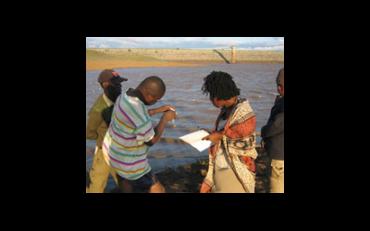The Limpopo River Basin, one of the main transboundary river basins in the Southern Africa Development Community (SADC) region extends through Botswana, Zimbabwe, South Africa and Mozambique covering a total area of some 415,000 square kilometers and with a reach of approximately 1,700 kilometres.
Managing Flows for Sustainable Development
The Limpopo Basin is one of the most developed river sytems in southern Africa. The natural flow regime and ecology of the river course has been modified as a result of the construction of numerous dams on the tributaries of the Limpopo River, the majority of which were built to store water.
Learning from the Limpopo River Basin
The project aimed to build awareness and capacity for environmental flows assessment in the basin and identify institutional and legal mechanisms for mainstreaming environmental flows. Interest in environmental flows in the region had been promoted by the South African Water Law, which like the water policy in Tanzania, calls for prioritization of water allocation to meet the basic needs of people and nature. Learning was a major focus of the project. To catalyse understanding of environmental flows and applications in development, IUCN facilitated field exchange visits by project managers from the Limpopo River Basin to the Lesotho Highlands Water Project. This allowed the group to observe results from environmental flows implementation. In partnership with the Global Water Partnership (GWP) in Southern Africa, WaterNet, UNESCO FEWSNET and the South Africa Department of Water Affairs, the project staged a 10-day regional training course. In total, 34 water practitioners and managers from all Southern African Development Community (SADC) countries took part.
Joining forces
A demonstration of environmental flow assessments was carried out in the Mzingwane Catchment in Zimbabwe. Wet and dry season assessments of hydrology and water resources, water quality, hydraulics, geomorphology, fisheries, agriculture, economics and social issues were completed by a multi-disciplinary team of specialists. Analysis showed expected changes in river conditions as a result of changes in flow allocation (in terms of quantity and timing) downstream of the Mzingwane dam. Scenarios for improving river health through management of flow from the Mzingwane dam, including future options for water supply to the City of Bulawayo, were then developed through a participatory workshop process with key stakeholders from the Catchment Management Agency and the City of Bulawayo.
A review was carried out of the SADC Protocol on Shared Watercourses and national legislation from the four riparian states to determine provisions supporting application of environmental flows and reform needs. The review identified attempts to address environmental flows at both policy and legislative levels. It also recognized increased knowledge of the direct and indirect costs of degraded rivers to national economies as a priority. Concerted action was supported to establish clear and systematic rules in each country legitimizing the provision of water for environmental flows and supporting legislation to empower water managers to manage river flows according to environmental flow recommendations. In addition, given the great importance of transboundary rivers in the region, the review recommended the harmonization of management units (for example to river basins) to ease cooperation. The project culminated in the formation of a Southern Africa Regional Environmental Flows Network. Participants include managers from the Limpopo River Basin Commission, SADC Water Resources Technical Committee and Directors of Water in member states of SADC. The aims of the network were to increase access to technical expertise, promote sharing of experiences, catalyze action on recommendations from the project, and reform of policy and legal frameworks.
